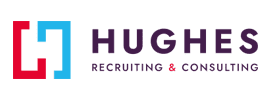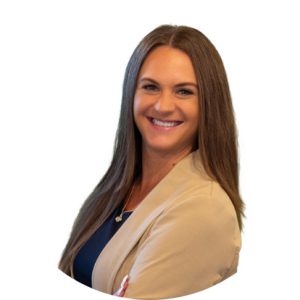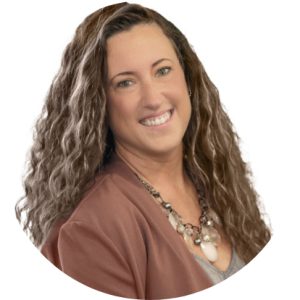Elevate Your Resume with These Proven Top 10 Tips
Writing a great resume can be tricky. You need to balance between showing off your achievements and not giving too much information that could overwhelm a potential employer. There are numerous resume writing tips that can help you find that balance and make a good first impression during your job search.
Common Resume Writing FAQs
Before you start creating your resume, it’s important to understand its basic functions. Let’s explore some common questions people often ask:
What is the purpose of a resume?
The main goal of a resume is to give a snapshot of your skills, experiences, and achievements that match the job you’re applying for. It’s like a marketing brochure, aiming to persuade the employer to invite you for a job interview by demonstrating how well-suited you are for the position based on your qualifications.
How long should my resume be?
The best length for a resume is one page, especially if you have less than 10 years of experience. This length helps you concentrate on your most important experiences and skills. For people with a longer career, a two-page resume is okay if the information is relevant to the job you’re applying for.
Can I use a functional resume instead of a chronological one?
Chronological resumes are usually preferred because they clearly show your work history in order. However, a functional resume might be better if you’re changing careers or have big gaps in your employment. This kind of resume highlights your skills and experiences more than where you’ve worked. But be careful with this format because some employers might be wary of it since it doesn’t clearly show your work timeline.
Should I include a resume summary?
This entirely depends on your career stage. A professional summary is usually better for those who have some work experience, as it showcases your skills and what you can offer based on your previous jobs. On the other hand, an objective statement might be more suitable if you’re new to the workforce or if you’re changing careers, since it focuses on what you are seeking to achieve and how you hope to grow with the company.
Can I include volunteer work on my resume?
Absolutely. Volunteer work can be included, especially if it’s relevant to the job you’re applying for or demonstrates transferable skills. It’s also useful to include if you have a limited work history.
Can I use resume templates?
It’s okay to use a template as a starting point for your resume, but make sure to tailor it to showcase your unique skills and experiences. Templates sometimes have formatting that doesn’t work well when you upload it to a job application system. Make sure that any template you choose is clean, professional, and easy to read.
Should I Include a Photo on My Resume?
Including a photo on your resume isn’t standard practice and can sometimes be seen as discriminatory. Unless the employer specifically asks for one, it’s best to leave a photo off your resume.
How often should I update my resume?
Update your resume regularly, ideally after completing significant projects, learning new skills, or achieving new certifications. Keeping your resume updated ensures you’re always ready for new opportunities or unexpected job changes.
Unlock Your Career Potential: 10 Professional Resume Tips
1. Use a Clean, Clear Resume Format
A good resume is brief and concise. Pick a neat, professional design that makes it easy to read quickly. You can use common fonts like Arial, Times New Roman, or Calibri in sizes from 10 to 12 points. Use bullet points to make information easy to understand and keep the formatting the same all throughout the resume. Margins should be at least one inch wide on every side and there should be enough space between chunks of information, so your resume doesn’t look too busy.
2. Write a Compelling Summary
With your name, phone number, and email address at the top, write a short summary about yourself to place directly below it. This should be 3 to 4 sentences long and briefly talk about your best skills, what you’ve done before, and what makes you special.
Make sure this part shows how you fit the job you’re applying for by using some of the keywords from the job description. It should not only list your skills but also show who you are professionally and why you stand out. This section is your chance to make a great first impression and set the tone for the rest of your resume.
3. Highlight Your Relevant Experiences and Achievements
When listing your work experience on your resume, it’s best to list it out in chronological order. Start with your most recent job and go backwards from there. For each job, include your job title, the company’s name, its location, and the dates you worked there. This helps the person reading your resume see your latest and most relevant experiences first.
Focus on what you achieved instead of simply listing what your job duties were. Start each bullet point with action verbs to show your direct role and impact. Using specific numbers, like percentages or metrics, to show your success in a clear way. For example, instead of saying “responsible for managing a team,” you could say you “managed a team of 10, increasing productivity by 20% through better leadership and new methods.”
4. Use Related Keywords
Many companies now use Applicant Tracking Systems (ATS) to help manage the large number of resumes they get. These systems scan resumes for specific keywords and phrases from the job description to identify suitable candidates. To improve your resume’s chance of getting through these filters and being seen by a recruiter, try customizing your resume for each job.
Include relevant keywords and phrases from the job listing, focusing on skills, tools, and experiences mentioned there. Use these terms naturally within your descriptions of your work history and skills. However, make sure you don’t overload your resume with too many keywords. This can make it seem unnatural and might even make the ATS flag it as spam.
5. Include a Skills Section
Make a separate section on your resume for relevant skills and certifications to show off what you can do. If you have different kinds of skills, like soft and technical, group them into categories.
For example, technical skills could be things like using software or speaking another language, and soft skills could be things like being a good leader or communicating well. Try to organize this section so it’s easy to look at quickly, maybe by using columns or just a simple bulleted list.
6. Add Your Educational Background
Start with your highest degree when listing your education on your resume. Include the name of the school, where it is, what degree you got, and the year you graduated. If you just finished school and your GPA is above 3.0, you can add that too.
7. Create a List References on a Separate Page
It’s a good idea to leave references off your resume. Including them uses up space that you could spend talking about your skills, experiences, and achievements.
Instead, make a separate list of references that you can give to the recruiters if asked. This list should have the names, job titles, places where they work, and how to contact people who can speak well of your professional skills and character. Make sure these people know they might be contacted by potential employers.
8. Do Not Add Personal Information
Including personal details like hobbies, marital status, and disabilities on your resume is not only irrelevant but can also introduce bias into the hiring process. Employers are mainly interested in your skills, experience, and qualifications related to the job.
Additionally, sharing such personal information might unintentionally break privacy rules and could distract the recruiters from the important qualifications you bring to the role. It’s best to keep your resume professional and focused, making sure that every piece of information you include showcases your abilities and suitability for the job.
9. Use a Cover Letter to Add Context
Always attach it along with your resume unless the job posting specifically says not to. The letter should add to what your resume says by giving more about your personality, explaining any unusual things in your resume (like gaps in employment), and giving more details on how your experiences fit with the job. It’s your chance to create a personal connection with the hiring manager and stand out from other applicants.
10. Proofread Multiple Times
After finishing your resume, check it several times to make sure there are no spelling, grammar, or formatting mistakes. These errors can make you look unprofessional and might make the hiring manager question your attention to detail. It’s also a good idea to have someone else look over your resume to spot any mistakes you might have missed. You can also use tools like Grammarly or Microsoft Word’s spell check to find basic mistakes.
HUGHES RESOURCES CAN HELP YOU FIND THE RIGHT JOB
We match candidates with job opportunities in industrial, clerical, and professional settings. Whether you’re seeking a change, advancement, or a fresh start, we’re here to support and guide you every step of the way. Contact us today and let’s explore how we can help you find a job that not only meets your needs but also fulfills your professional ambitions!
























